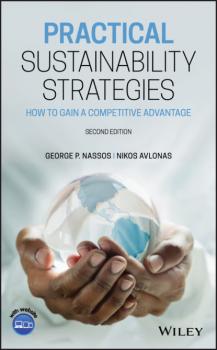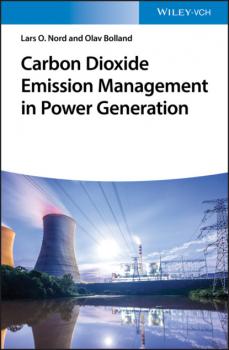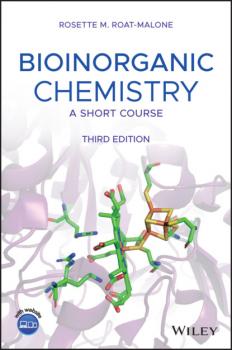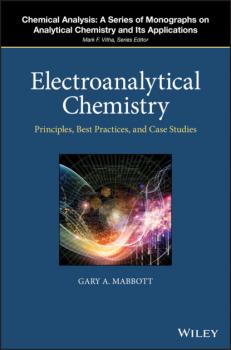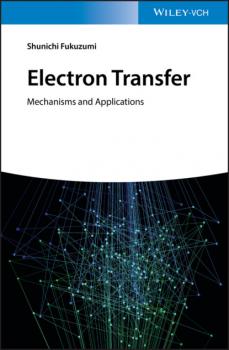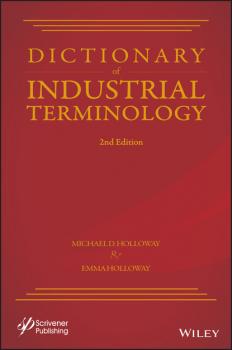Химия
Различные книги в жанре ХимияThermodynamic Processes 2
Thermodynamic Processes 2 is devoted to the study of equilibrium between phases in the case of the four changes of physical state: fusion, boiling or vaporization, sublimation and allotropy or transition. It also includes a section that addresses energy's relationship to the zero sum aspect of exergy and thermal cycles. This second volume presents scientific and technical examples – both theoretical and industrial – which are the result of a careful selection, accrued over more than three decades of teaching thermodynamics and in collaboration with the industry sector. The didactic exercises and the practical problems are entirely dedicated to the understanding of this science, and the potential applications for the industrial world. This book is a tool for work and reflection essential for the student in training, as well as the engineer or experienced researcher.
Practical Sustainability Strategies
The guide to sustainable strategies and tools to improve competitive business advantage, updated with practical case studies and supporting teaching material The revised and updated second edition of Practical Sustainability Strategies is filled with proven strategies and tools for organizations to integrate sustainability into their business models. Drawing on the authors’ research and years of hands-on experience, the book defines strategies that organizations can put in place to develop, extend, or maintain competitive advantage without harming the environment. Additionally, the authors provide tools for measuring and reporting progress and present illustrative case studies that clearly demonstrate the importance of implementing sustainability. Since the first edition was published in 2013, new strategies, measurements, and certifications have been developed. The book, which is used by several business schools around the globe, has been updated to include these new and effective strategies, including circular economy, the sharing economy, adaptation, resiliency, and strategies to fight climate change. This new edition also highlights the UN Sustainable Development Goals that have been adopted worldwide. This updated second edition: Covers new strategies, measuring systems, GRI, STARS and B-Lab certifications Offers teaching slides and questions for use in the classroom Explores the principles and importance of sustainability Examines more than 10 different sustainability strategies Presents the economic justification for sustainability with illustrative examples Written for sustainability managers, ESG professionals, engineers, process designers, policy makers, CEOs, business schools, and others, the second edition of Practical Sustainability Strategies offers an updated guide to the most recent strategies and tools that can be put into place to improve competitive advantage, while also providing a positive impact to the community and workplace.
Secondary Metabolites of Medicinal Plants
Covers the structurally diverse secondary metabolites of medicinal plants, including their ethnopharmacological properties, biological activity, and production strategies <br> <br> Secondary metabolites of plants are a treasure trove of novel compounds with potential pharmaceutical applications. Consequently, the nature of these metabolites as well as strategies for the targeted expression and/or purification is of high interest. Regarding their biological and pharmacological activity and ethnopharmacological properties, this book offers a comprehensive treatment of 100 plant species, including Abutilon, Aloe, Cannabis, Capsicum, Jasminum, Malva, Phyllanthus, Stellaria, Thymus, Vitis, Zingiber, and more. It also discusses the cell culture conditions and various strategies used for enhancing the production of targeted metabolites in plant cell cultures. <br> <br> Secondary Metabolites of Medicinal Plants: Ethnopharmacological Properties, Biological Activity and Production Strategies is presented in four parts. Part I provides a complete introduction to the subject. Part II looks at the ethnomedicinal and pharmacological properties, chemical structures, and culture conditions of secondary metabolites. The third part examines the many strategies of secondary metabolites production, including: biotransformation; culture conditions; feeding of precursors; genetic transformation; immobilization; and oxygenation. The last section concludes with an overview of everything learned. <br> <br> -Provides information on cell culture conditions and targeted extraction of secondary metabolites confirmed by relevant literature <br> -Presents the structures of secondary metabolites of 100 plant species together with their biological and pharmacological activity <br> -Discusses plant species regarding their distribution, habitat, and ethnopharmacalogical properties <br> -Presents strategies of secondary metabolites production, such as organ culture, pH, elicitation, hairy root cultures, light, and mutagenesis <br> <br> Secondary Metabolites of Medicinal Plants is an important book for students, professionals, and biotechnologists interested in the biological and pharmacological activity and ethnopharmacological properties of plants. <br>
Carbon Dioxide Emission Management in Power Generation
Provides an engaging and clearly structured source of information on the capture and storage of CO2 <br> <br> Designed to bridge the gap between the many disciplines involved in carbon dioxide emission management, this book provides a comprehensive yet easy-to-understand introduction to the subject of CO2 capture. Fit for graduate students, practicing process engineers, and others interested in the subject, it offers a clear understanding and overview of thermal power plants in particular and of carbon dioxide capture and storage (CCS) in general. <br> <br> Carbon Dioxide Emission Management in Power Generation starts with a discussion of the greenhouse effect, climate change, and CO2 emissions as the rationale for the concept of CCS. It then looks at the long-term storage of CO2. A chapter covering different fossil fuels, their usage, and properties comes next, followed by sections on: CO2 generation, usage and properties; power plant technologies; theory of gas separation; power plant efficiency calculations; and classification of CO2 capture methods. Other chapters examine: CO2 capture by gas absorption and other gas separation methods; removing carbon from the fuel; pre- and post-combustion CO2 capture in power cycles; and oxy-combustion CO2 capture in power cycles. <br> <br> -Discusses both CO2 capture technologies as well as power generation technologies <br> -Bridges the gap between many different disciplines?from scientists, geologists and engineers, to economists <br> -One of the few books that covers all the different sciences involved in the capture and storage of CO2 <br> -Introduces the topic and provides useful information to the academic as well as professional reader <br> <br> Carbon Dioxide Emission Management in Power Generation is an excellent book for students who are interested in CO2 capture and storage, as well as for chemists in industry, environmental chemists, chemical engineers, geochemists, and geologists. <br>
Open and Toroidal Electrophoresis
Presents the theory and applications of Toroidal Capillary, Microchip, and Slab Electrophoresis to analytical chemists across a range of disciplines Written by one of the developers of Toroidal Capillary Electrophoresis (TCE), this book is the first to present this novel analytical technique, in detail, to the field of analytical chemistry. The exact expressions of separation efficiency, resolution, peak capacity, and many other performance indicators of the open and toroidal layouts are presented and compared. Featuring numerous illustrations throughout, Open and Toroidal Electrophoresis: Ultra-High Separation Efficiencies in Capillaries, Microchips and Slabs offers chapters covering: Solvents and Buffer Solutions; Fundamentals of Electrophoresis; Open Layout; and Toroidal Layout. Confronting Performance Indicators is next, followed by chapters on High Voltage Modules and Distributors; Heat Removal and Temperature Control; and Detectors. The book finishes with an examination of the applications of Toroidal Electrophoresis. The first book to offer a detailed account of Toroidal Electrophoresis—written by one of its creators Compares the toroidal layouts with the well-established open layouts of the three most used platforms (Capillary, Microchip, and Slab) Provides solutions to many of the experimental issues arising in electromigration techniques and discusses the voltage distributors and detectors that are compatible with the toroidal layouts Richly illustrated with a large number of useful equations showing the relationships between important operational parameters and the performance indicators Open and Toroidal Electrophoresis is aimed at method developers and separation scientists working in clinical analysis, and food analysis, as well as those in pharmacology, disease biomarker applications, and nucleic acid analysis using the Capillary, Microchip, or slab Platform. It will also benefit undergraduate and graduate students of inorganic analytical chemistry, organic analytical chemistry, bioanalysis, pharmaceutical sciences, clinical sciences, and food analysis.
Bioinorganic Chemistry
Introduces students to the basics of bioinorganic chemistry This book provides the fundamentals for inorganic chemistry and biochemistry relevant to understanding bioinorganic topics. It provides essential background material, followed by detailed information on selected topics, to give readers the background, tools, and skills they need to research and study bioinorganic topics of interest to them. To reflect current practices and needs, instrumental methods and techniques are referred to and mixed in throughout the book. Bioinorganic Chemistry: A Short Course, Third Edition begins with a chapter on Inorganic Chemistry and Biochemistry Essentials. It then continues with chapters on: Computer Hardware, Software, and Computational Chemistry Methods; Important Metal Centers in Proteins; Myoglobins, Hemoglobins, Superoxide Dismutases, Nitrogenases, Hydrogenases, Carbonic Anhydrases, and Nitrogen Cycle Enzymes. The book concludes with chapters on Nanobioinorganic Chemistry and Metals in Medicine. Readers are also offered end-of-section summaries, conclusions, and thought problems. Reduces size of the text from previous edition to match the first, keeping it appropriate for a one-semester course Offers primers and background materials to help students feel comfortable with research-level bioinorganic chemistry Emphasizes select and diverse topics using extensive references from current scientific literature, with more emphasis on molecular biology in the biochemistry section, leading to a discussion of CRISPR technology Adds new chapters on hydrogenases, carbonic anhydrases, and nitrogen cycle enzymes, along with a separate chapter on nanobioinorganic chemistry Features expanded coverage of computer hardware and software, metalloenzymes, and metals in medicines Supplemented with a companion website for students and instructors featuring Powerpoint and JPEG figures and tables, arranged by chapter Appropriate for one-semester bioinorganic chemistry courses, Bioinorganic Chemistry: A Short Course, Third Edition is ideal for upper-level undergraduate and beginning graduate students. It is also a valuable reference for practitioners and researchers in need of a general introduction to the subject, as well as chemists requiring an accessible reference.
Electroanalytical Chemistry
Provides a strong foundation in electrochemical principles and best practices Written for undergraduate majors in chemistry and chemical engineering, this book teaches the basic principles of electroanalytical chemistry and illustrates best practices through the use of case studies of organic reactions and catalysis using voltammetric methods and of the measurement of clinical and environmental analytes by potentiometric techniques. It provides insight beyond the field of analysis as students address problems arising in many areas of science and technology. The book also emphasizes electrochemical phenomena and conceptual models to help readers understand the influence of experimental conditions and the interpretation of results for common potentiometric and voltammetric methods. Electroanalytical Chemistry: Principles, Best Practices, and Case Studies begins by introducing some basic concepts in electrical phenomena. It then moves on to a chapter that examines the potentiometry of oxidation-reduction processes, followed by another on the potentiometry of ion selective electrodes. Other sections look at: applications of ion selective electrodes; controlled potential methods; case studies in controlled potential methods; and instrumentation. The book also features several appendixes covering: Ionic Strength, Activity and Activity Coefficients; The Nicolsky-Eisenman Equation; The Henderson Equation for Liquid Junction Potentials; Selected Standard Electrode Potentials; and The Nernst Equation Derivation. Introduces the principles of modern electrochemical sensors and instrumental chemical analysis using potentiometric and voltammetric methods Develops conceptual models underlying electrochemical phenomena and useful equations Illustrates best practice with short case studies of organic reaction mechanisms using voltammetry and quantitative analysis with ion selective electrodes Offers instructors the opportunity to select focus areas and tailor the book to their course by providing a collection of shorter texts, each dedicated to a single field Intended as one of a series of modules for teaching undergraduate courses in instrumental chemical analysis Electroanalytical Chemistry: Principles, Best Practices, and Case Studies is an ideal textbook for undergraduate majors in chemistry and chemical engineering taking instrumental analysis courses. It would also benefit professional chemists who need an introduction to potentiometry or voltammetry.
Electron Transfer
Written by one of the top scientists in this field, this is a systematic overview of the fundamental concepts and powerful applications.<br> The author presents the central theories and mechanisms in electron transfer, followed by several systems in nature where this is important, while also covering modern green applications. <br> An invaluable resource for graduate students and researchers working in this field in academia and industry. <br>
Polyurethanes
This book, cohesively written by an expert author with supreme breadth and depth of perspective on polyurethanes, provides a comprehensive overview of all aspects of the science and technology on one of the most commonly produced plastics.<br /><br /> <ul> <li>Covers the applications, manufacture, and markets for polyurethanes, and discusses analytical methods, reaction mechanisms, morphology, and synthetic routes</li> <li>Provides an up-to-date view of the current markets and trend analysis based on patent activity and updates chapters to include new research</li> <li>Includes two new chapters on PU recycling and PU hybrids, covering the opportunities and challenges in both</li> </ul>
Dictionary of Industrial Terminology
This is the most comprehensive dictionary of maintenance and reliability terms ever compiled, covering the process, manufacturing, and other related industries, every major area of engineering used in industry, and more. The over 15,000 entries are all alphabetically arranged and include special features to encourage usage and understanding. They are supplemented by hundreds of figures and tables that clearly demonstrate the principles & concepts behind important process control, instrumentation, reliability, machinery, asset management, lubrication, corrosion, and much much more. With contributions by leading researchers in the field: Zaki Yamani Bin Zakaria Department, Chemical Engineering, Faculty Universiti Teknologi Malaysia, Malaysia Prof. Jelenka B. Savkovic-Stevanovic, Chemical Engineering Dept, University of Belgrade, Serbia Jim Drago, PE, Garlock an EnPro Industries family of companies, USA Robert Perez, President of Pumpcalcs, USA Luiz Alberto Verri, Independent Consultatnt, Verri Veritatis Consultoria, Brasil Matt Tones, Garlock an EnPro Industries family of companies, USA Dr. Reza Javaherdashti, formerly with Qatar University, Doha-Qatar Prof. Semra Bilgic, Faculty of Sciences, Department of Physical Chemistry, Ankara University, Turkey Dr. Mazura Jusoh , Chemical Engineering Department, Universiti Teknologi Malaysia Jayesh Ramesh Tekchandaney, Unique Mixers and Furnaces Pvt. Ltd. Dr. Henry Tan, Senior Lecturer in Safety & Reliability Engineering, and Subsea Engineering, School of Engineering, University of Aberdeen Fiddoson Fiddo, School of Engineering, University of Aberdeen Prof. Roy Johnsen, NTNU, Norway Prof. N. Sitaram , Thermal Turbomachines Laboratory, Department of Mechanical Engineering, IIT Madras, Chennai India Ghazaleh Mohammadali, IranOilGas Network Members' Services Greg Livelli, ABB Instrumentation, Warminster, Pennsylvania, USA Gas Processors Suppliers Association (GPSA)

